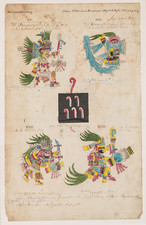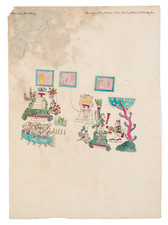Cervorum Venatio XXV, engraved by Theodor de Bry and published in Frankfurt in 1590, provides a detailed representation of Native Americans using an adept hunting method by a stream, employing deer skins as disguises to approach stags unobtrusively. The depiction's notable feature is the subtle reflection of the deer's heads in the water, showcasing de Bry's attention to environmental detail.
The 16th century witnessed a significant European interest in the New World, marked by exploration and colonization. Theodor de Bry's engravings served as visual accounts of native customs and practices for the European audience. In this particular piece, de Bry focuses on an indigenous hunting technique that was distinct from European methods. The depicted hunters, using deer pelts as camouflage, highlight a methodical approach to hunting, rooted in keen observation and understanding of deer behavior.
The accompanying Latin text sheds light on the hunters' strategy of waiting for deer by the stream, taking advantage of the stags' predictable patterns. Moreover, the text makes note of the natives' method of preparing deer skins using shells, emphasizing their specialized skills in utilizing available natural resources for various purposes. The engraving, complemented by the text, offers a nuanced perspective on the relationship between indigenous communities and their environment.
Theodor de Bry (1528-1598) was a prominent Flemish engraver and publisher best known for his engravings of the New World. Born in Liege, de Bry hailed from the portion of Flanders then controlled by Spain. The de Brys were a family of jewelers and engravers, and young Theodor was trained in those artisanal trades.
As a Lutheran, however, his life and livelihood were threatened when the Spanish Inquisition cracked down on non-Catholics. De Bry was banished and his goods seized in 1570. He fled to Strasbourg, where he studied under the Huguenot engraver Etienne Delaune. He also traveled to Antwerp, London, and Frankfurt, where he settled with his family.
In 1590, de Bry began to publish his Les Grands Voyages, which would eventually stretch to thirty volumes released by de Bry and his two sons. The volumes contained not only important engraved images of the New World, the first many had seen of the geographic novelties, but also several important maps. He also published a collection focused on India Orientalis. Les Grands Voyages was published in German, Latin, French, and English, extending de Bry’s fame and his view of the New World.










![[Uncaptioned image of two figures seated in front of a tipi, mounted albumen print]](https://storage.googleapis.com/raremaps/img/small/78744.jpg)

![[ Florida Indians - Destroying the Enemy's Towns By Night ] Hostium oppida noctu incendendi ratio. XXXI.er absagen](https://storage.googleapis.com/raremaps/img/small/97385.jpg)
![(North Dakota) Scalp Dance of the Minatarres [near Fort Clark, on the Missouri River]](https://storage.googleapis.com/raremaps/img/small/77692.jpg)
![[ Florida Native Americans ] Trophaeum & solennes ritus devictis hostibus. XVI. [Trophy and Solemn Rite after the Defeat of the Enemy.]](https://storage.googleapis.com/raremaps/img/small/98050.jpg)